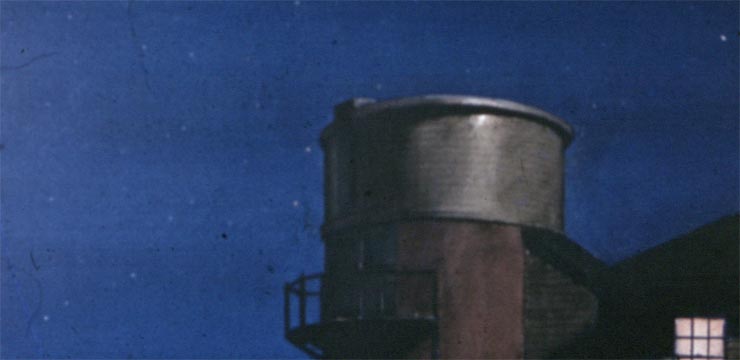
Observing Report: August 10
by Matt White
Saturday night sported mostly clear skies with a few high thin clouds, looking to be a promising night for stargazing.
When I arrived at Seagrave Observatory, the parking lot was already full of cars and the dome had about twenty people waiting to view the heavens. Steve Siok was hard at work preparing the Alvan Clark for the evening session. Once the telescope was made ready, Steve covered the history of the Society’s centerpiece instrument. It was still twilight and the crescent moon had already slipped behind the trees. A few minutes later I found Saturn and proceeded to train the Clark on the ringed planet.
Steve had selected a 25mm eyepiece which gave a magnification factor of 108 power and even though the seeing was excellent we opted not to waste any time by increasing the magnification. We organized the crowd in a circle around the dome and managed to provide a view to about 40 people before the ringed planet slipped behind the trees.
Our next target for the evening was the double, Mizar and Alcor. This pair is located at the bend in the handle of the Big Dipper and is very easy for a novice to locate. The distance from Earth is approximately 82 light years. For this observation, we used a 40mm eyepiece giving a magnification factor of 66 power. We still had quite a crowd in the dome at this point.
A while later, we trained over to M-11, better known as the Wild Duck Cluster, an open cluster approximately 6200 light years distant. This object is one of the richest and most compact clusters known, containing and 2900 stars. It is located in the constellation of Scutum.
The last object of the evening is one of my favorites, M-31, the Great Galaxy of Andromeda. This is the largest galaxy in the local group, which includes the Milky Way, the Triangulum Galaxy, and about 30 other smaller galaxies. Andromeda is about 200,000 light years across and 2.5 million light years distant. This Galaxy is on a collision course with our own Milky Way and will eventually form a giant elliptical galaxy in about 3.75 billion years.
Kathy Siok gave me an estimate of 60 to 65 guests, which is the largest turnout I have seen since becoming a member.



